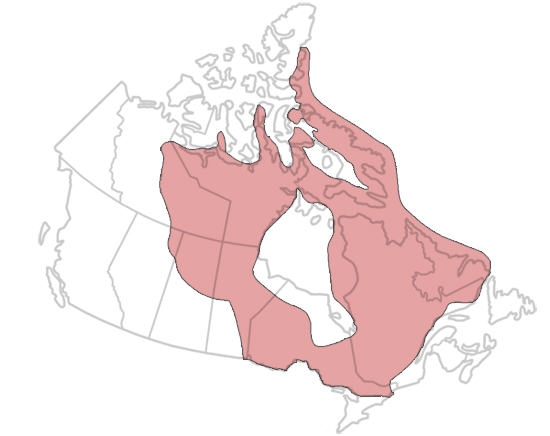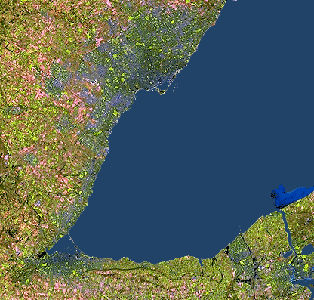Plate tectonics is the theory that rocky plates divide Earth’s surface. The plates move as Earth releases heat from its interior. The movement of plates creates volcanoes and mountains and causes earthquakes.
This article is a plain-language summary of Plate Tectonics. If you are interested in reading about this topic in more depth, please see our full-length entry, Plate Tectonics.
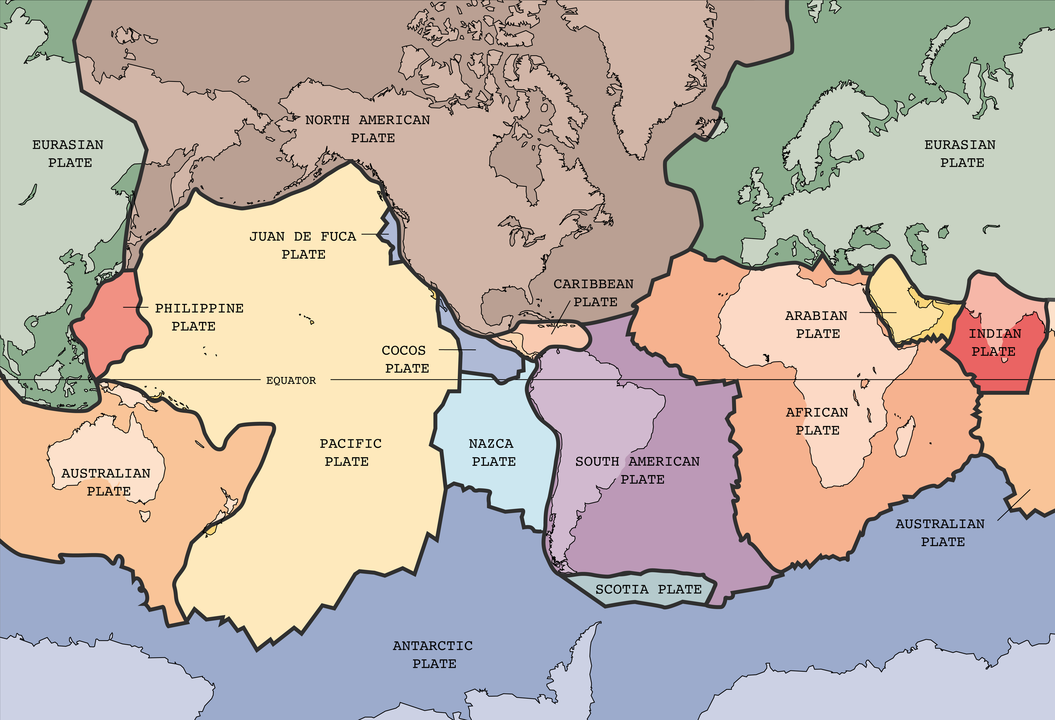
History
Early Discoveries and Theories
Early European explorers who visited the Americas noticed that the coasts of South America and Africa would fit together if they were not separated by the Atlantic Ocean. They thought that a large destructive event caused the continents to separate.
In the 19th century, geologists thought that Earth must be millions of years old because of how thick sedimentary rock was. However, physicists argued that Earth was losing heat to space. They said that as Earth cooled, its surface wrinkled up as it shrank and formed mountain belts. The discovery of radioactivity led to ways of calculating Earth’s age at about 4.6 billion years.
Continental Drift
In 1910, geologist Frank B. Taylor suggested that Earth’s great mountain belts were formed as the continents moved. In 1912, meteorologist Alfred Wegener proposed that all continents came together into a single “supercontinent” called Pangea. His theory was that it broke apart about 200 million years ago. Since then, the continents have been moving separately through the oceans. This theory was known as continental drift.
Seismology and Earth’s Interior
The study of earthquakes is called seismology. Seismology helped scientists understand Earth’s internal structure. The surface of Earth is called the crust. Beneath the crust is dense rock called the mantle. The crust and the top parts of Earth’s mantle form the lithosphere. Beneath that is a molten (melted by heat) core called the asthenosphere.
Convection Currents
In 1931, Arthur Holmes suggested that radioactive heating caused convection currents within Earth’s mantle. Convection refers to the movement of a fluid or gas caused by changing temperature. Holmes believed that beneath the ocean floor, these currents rose. They spread out in opposite directions and eventually sank to ocean trenches. In 1960, Harry H. Hess added to Arthur Holmes’s idea. He suggested that convection is how the ocean floor spreads. Convection helps explain how Earth’s upper mantle moves.
Overview of Plate Tectonics
The difference between the theory of plate tectonics and the theory of continental drift is that continental drift assumed that continents moved through the oceans. According to the theory of plate tectonics, continents and ocean floors are parts of the lithospheric plates that lie on top of the asthenosphere.
Plates have three kinds of boundaries: divergent plate, convergent plate and transform fault.
Divergent Plate Boundaries

Divergent plate boundaries are places where plates spread apart. When plates spread apart, lava from the mantle rises to the surface. In the ocean, this causes ridges to form and creates new ocean floor.
Convergent Plate Boundaries
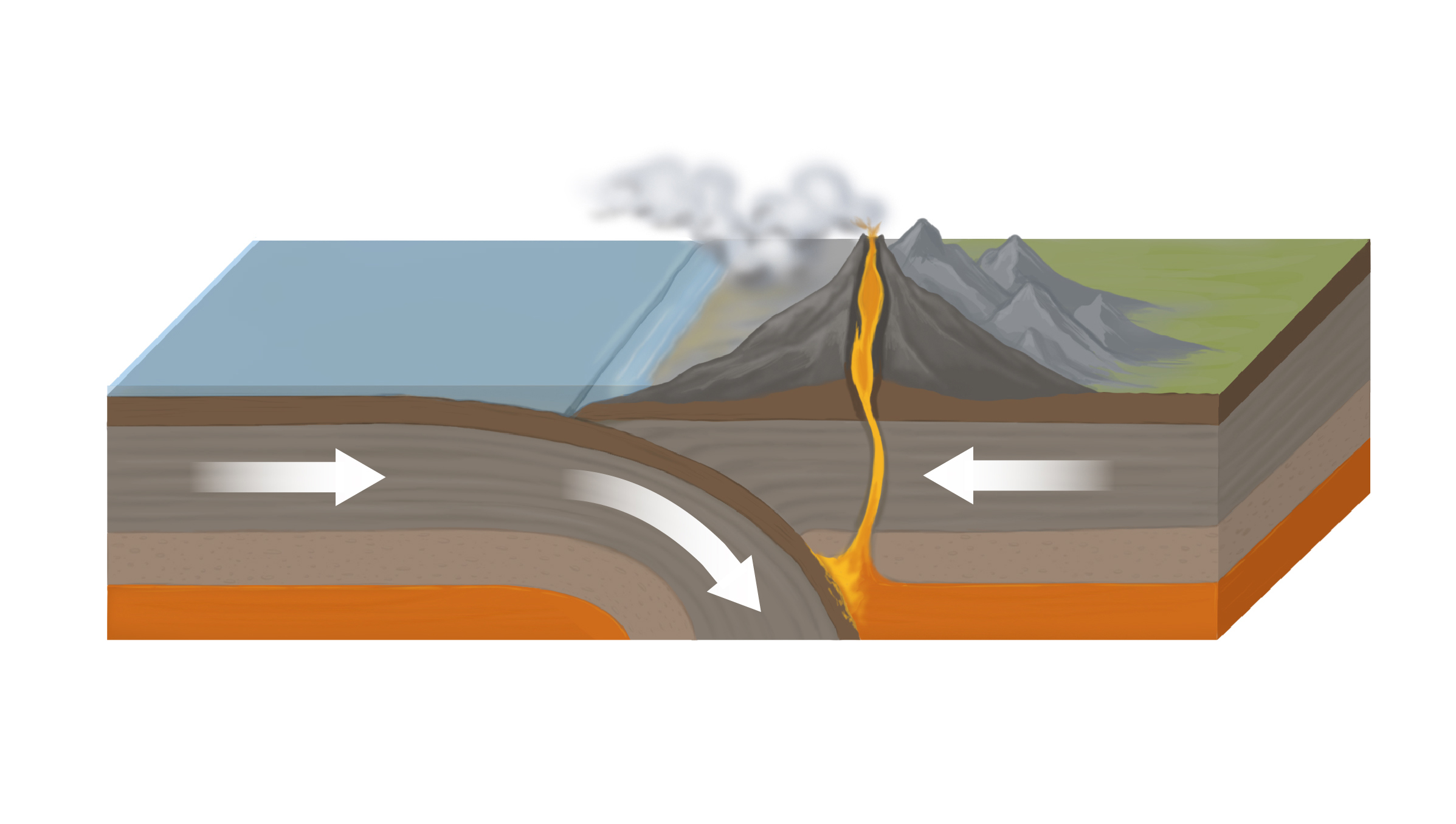
Convergent plate boundaries are places where plates come together. When plates come together, one plate sinks beneath the other and disappears into the mantle. The location where a plate sinks beneath the other is called a subduction zone. When an oceanic plate meets a continental plate, the oceanic plate cools and slides into the mantle because it is denser.
Transform Fault Boundaries
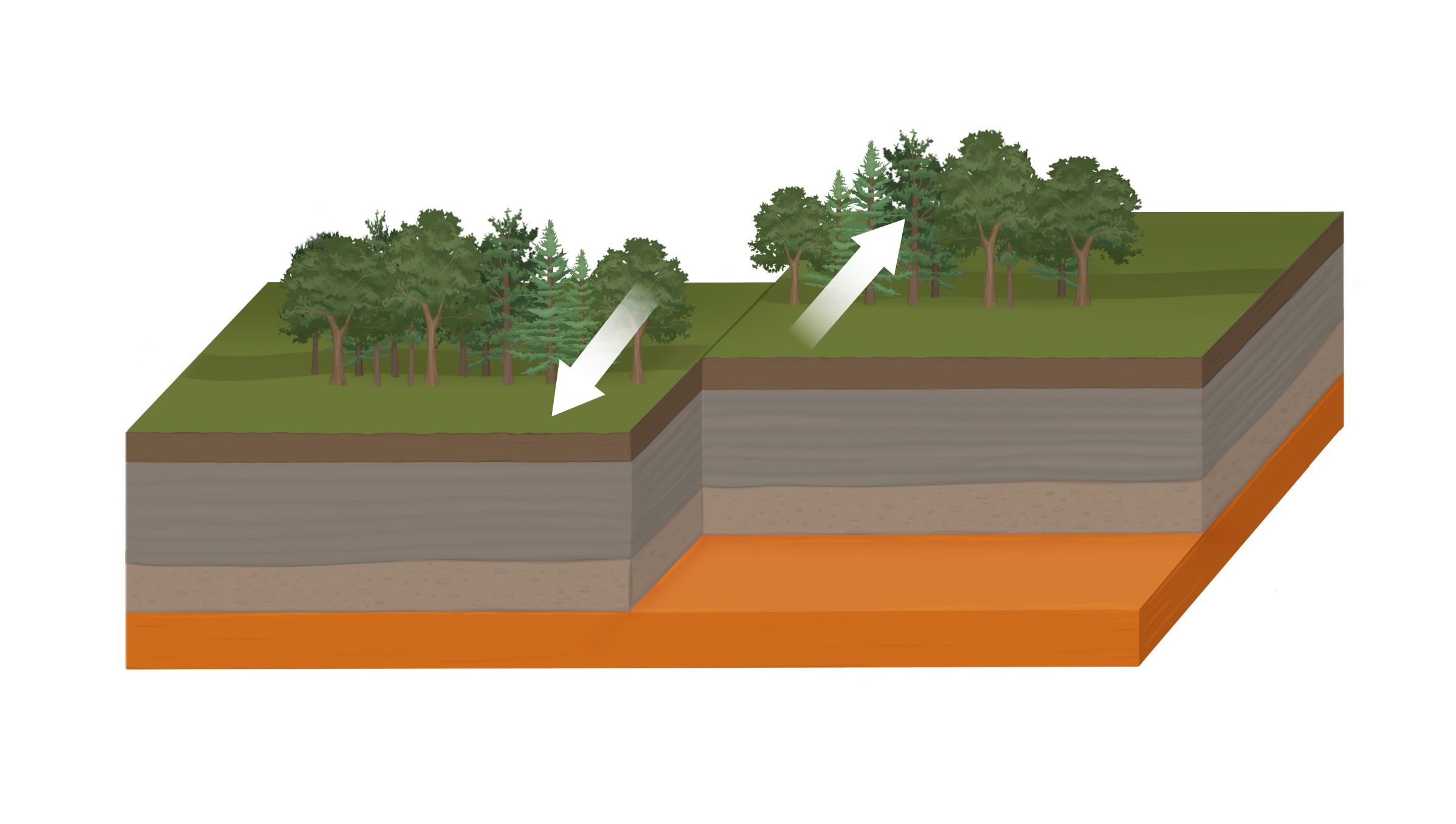
Transform fault boundaries are places where plates slide horizontally past one another.
Present System of Plates
Earth’s surface is broken into seven major tectonic plates and many smaller ones. The Pacific Plate is the largest and consists almost entirely of oceanic lithosphere.
The organization of the plates is changing. Most changes are gradual.
Consequences of Plate Tectonic Activity
Earthquakes, tsunamis and volcanoes are the most concerning aspects of plate tectonics. Most of these events take place at plate boundaries. The largest of these events occur where plates come together. Friction causes converging plates to stick. Stress grows here until the stored energy is suddenly released in a major earthquake.
Plate tectonic activity makes many kinds of mineral deposits. The chains of volcanic and plutonic rocks (types of igneous rock) above subduction zones contain deposits of copper, molybdenum and gold. The thick sedimentary deposits within plates at continent–ocean boundaries contain accumulations (buildup) of hydrocarbons.
Collision between continents allows living things to move from one continent to another. When continents separate, living things can evolve into different species on their own. The movement of continents causes climates to change and is at least partly responsible for periodic ice ages.
NFB Space School - Astrogeology - Lesson 4 - Chapter 2 - Plate Tectonics, Scott Simpson, provided by the National Film Board of Canada

 Share on Facebook
Share on Facebook Share on X
Share on X Share by Email
Share by Email Share on Google Classroom
Share on Google Classroom




